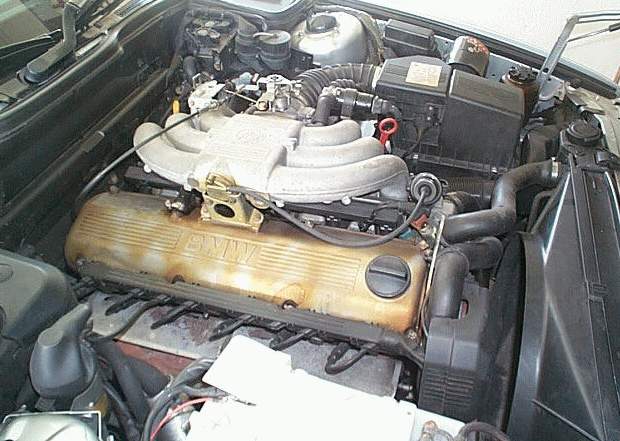Hot BMW Parts for eta Engines
More Power For 2.7 BMW ‘ETA’ Cars (325e, 325es, 528e)
This article applies to all BMW M20 2.7 liter ‘e’ (eta) cars. Examples include the E30 325e, 325es, and 325, plus the E28 528e. These cars with the ‘lowly’ eta engine are upgraded quite a bit -for fairly short money. First, you must change the rear axle gear ratio, also known as the Differential. Most ETA cars have the 2.93 open differentials; some late 87-88 528e have a 3.25 (5 speed), and 3.45 (auto) gears. None of the modifications listed below will be nearly as effective without a differential swap (cheap and easy).
Find a 3.25 or 3.73 from a 325i. 533i’s and 535i’s are commonly found with the 3.25. Junkyards are your friend. Or look on eBay, the turner motorsports BMW parts classifieds, readily BMW forums, or the Bimmerforums BMW parts classifieds.
The next step addresses ignition and fuel. The stock control units retard the spark at certain points and give less than ideal advance for full power. This was done by BMW to protect the engine from the possible effects of low-octane gas. The stock ignition also features an annoying rpm limiter.
Replacing the ECU with an aftermarket chip can do a decent job if mapped correctly. Mark D of Canada has great chips for these cars, as does Turner Motorsports/Jim Conforti. Spark advance should give a total of 33 degrees at full power with the stock (mild) cam, fuel is not a problem,. Changing pressure, rate of pressure rise, adjusting the flow meter, or changing fuel injectors can further benefit. However, dyno testing and analysis of the results should be done first. The Bosch 126 injectors that come with the e/eta engine have the capacity to support 170 horsepower (hp) at 55-60 PSI full-power fuel pressure. Use a Bosch 201 injector for horsepower levels beyond that. Some folks have used a Mustang 5.0 injector. I am not sure how well this works.
Need more real-world horsepower for your E car? Here are a few common ‘classic’ hot rod setups for the BMW M20 2.7l engine, as prescribed by Pete McHenry of Precision Performance in North Carolina:
- 3.25 differential, chip, stock 325i camshaft and valve springs, 5800 rev limit. 150-155 horsepower.
- 3.25 differential, chip, ported head, 325i valves, 325i cam, valve springs, 325i throttle body (with manifold opened to 65mm), headers, 6200 rpm limit. 165-170 hp.
- Same as the previous setup, but utilize 3.73 differential, Holley 4160 4 barrel carb, euro 520i manifold. 323 distributor, Schrick or similar 272-degree camshaft and springs, 6300 rpm rev limit. This is the hot low-buck setup right here. Serious acceleration, tq/hp… around 175 hp!
- 3.73 limited-slip differential, ported 325i head, bigger valves with some attention to them, 288 cams, lightweight flywheel, forged steel camshaft. 325i rods, 325i overbore pistons with specially machined domes/tops, 325i intake manifold and throttle body, 323i distributor. The injection is from a 1977-1978 M30 ‘Big Six’ L jetronic airflow meter, wiring harness, and control unit. Use 1 1/2″ headers (any good headers will work) with a dual 1 3/4 or single 2 1/4 inch system. McHenry says that with good headwork, matched cam, and good exhaust, this combo can make 220+ crank horsepower.
Not bad for a fuel economy-based M20 engine that began life with a whopping 121 horsepower!
Everett Pleasance – BMW High Performance Subject Matter Advisor












